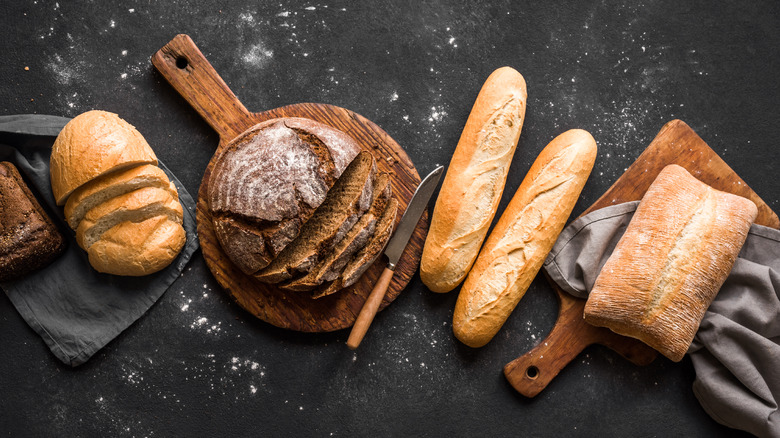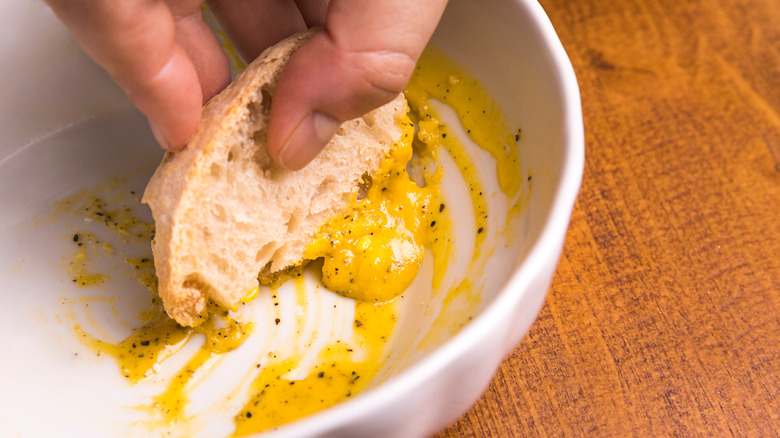What To Know When Eating Bread With Dinner In Italy
You'd think that in a country known for its "dolce vita" attitude, there would be no regulations regarding something so routine as eating. Well, if there's one aspect of Italian culture you should know, it's the importance of food. While it may seem odd to say that there's a right and wrong way to eat, the truth is that if you're planning on spending any time in Italy, you'll want to brush up on a few gastronomic guidelines — starting with bread.
This age-old food is just an extra on the table to eat while you wait for the rest of your meal, right? In the United States, many restaurant experiences begin with a basket of bread and perhaps some butter for spreading or olive oil and balsamic vinegar for dipping. Plenty of stateside Italian restaurants — and even establishments in Italy geared toward tourists — offer exactly that. Nonetheless, a true Italian meal does not start with an assortment of bread to enjoy, local food writer Elizabeth Minchilli confirms on her blog.
How is bread actually eaten in Italy?
Generally, Italians don't fill up on bread by itself before the start of the meal, as any bread that is brought to the table is meant to be eaten with other food, Minchilli's blog post explains. She adds that requesting olive oil and vinegar for your bread is especially not a thing in Italy. Instead, you're meant to enjoy pieces of bread to mop off your plate of excess meat, soup, vegetables, or even pasta sauce. There's a name for this: "Fare la scarpetta," which literally translates to "make the little shoe," according to Food & Wine. While this might not fit in with the table manners you grew up with, Italy Magazine reports that it's even deemed acceptable by Giovanni della Casa, author of the Italian etiquette book "Il Galateo." (Although, he only tolerates it for informal dining.)
Of course, there are exceptions to the rule about eating bread before your meal in Italy. Minchilli points out that if the kitchen brings you toasted bread with olive oil, this is considered an appetizer, and focaccia bread is generally meant to be eaten by itself. Finally, if you're in central Italy, know that the area's traditional bread is generally unsalted, according to Italy Magazine, and therefore not so tasty on its own. The intention, again, is to eat it in combination with food, which is often fairly salty — think Tuscan pecorino or Umbrian cured meats.

